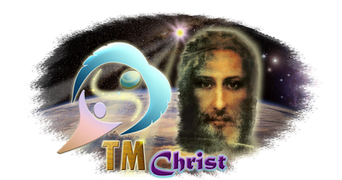We begin with Book 1, “God Before Creation – A Pre-Creation Theology.” Chapter 1, “Understanding the Nature of God” provides a common language for readers; without it none of what follows would make any sense. Because there is absolutely no empirical evidence available to support the existence of God, we begin with three fundamental beliefs that are followed by an expansion of those fundamental beliefs. Chapter 2, “God and Creation,” moves us deeper into the discussion of why God created the infinite universe. Of course, that has everything to do with us, individually, and why we are here.
Book 1 has set the stage for Book 2, “God of Love – A Loving-God
Theology. Chapter 3, “The Challenge of a Co-Creative God-Mortal Relationship,” more clearly defines the relationship between us individually and God. As we are mortal and finite, it is important to understand the original causes of “bad things” that come into our lives, and what that is all about. If we don’t understand that, then a loving relationship between God and us individually becomes really cloudy.
In Chapter 4, “Our Relationship with God,” we are finally able to see what our lives are all about. This chapter also prepares us for the spirit-infused social action that is proposed in later chapters. That is, if we truly believe that God is a God of Love, and created us to become like It, then we rationally must figure that God created us with the tools to achieve that result. The tools are the values that our species has used as the basis for its decision-making for over 8,000 generations. Now, besides sustaining our species, it is time to use those same values to sustain our societies, communities, families, and children.
For those who have figured out that God provided us with the values to make socially sustaining decisions for our selves, then the next step is to use those values to design socially sustainable families, child rearing, and parenting models as the foundation for more socially stable and peaceful communities and societies.
A major factor in developing socially sustainable families and societies is to design rational God-centered belief systems. For over 2 billion Christian believers, the church’s social evolution will not be possible without Re-Inventing Christianity as described in the chapters of Book 3. They provide a rational description of our individual relationship with God, God’s relationship with Jesus, and introduce the socially sustainable and consistent nature of God. “What about the theology of Apostle Paul?” you might ask. That too is given particular attention as the guilt with which his theology has permeated the Christian faith is untenable and does not contribute to the social sustainability of authentic loving relationships between believers, their church, and God.
That leaves us with the work of designing a Christian church built on the belief in a Loving-God and our spiritual and moral responsibility to contribute to the common good of all humankind, future generations, and our children. How the church fits into that development is critical for the rapid healing of distraught societies and nations of God-believers, whatever their God-centered religion may be.
The addendum provides background material that will be useful to readers to understand the broader scope of the values that are organic to our species, human motivation that emanates from those values, as well as social change that has become exponential in our lives. Understanding why we “tick” as we do is essential to the processes of constructive social evolution of our social, political, and economic institutions.
Regarding The Appellations Of God —
1) The word "God" is used very frequently in the text. Overuse in our western culture has made this word almost irrelevant and meaningless in the course of normal conversations and in readings such as this. That is unfortunate. For the redundancy and seeming overuse of that word in the text, I apologize.
2) The word "It" is also used, but sparingly as the "IT" word seems to unsettle most people. Traditionally, God has been consistently described in anthropomorphic terms to the extent that it is almost impossible for many people to think of God as being anything but human. "It" is used to name and describe The Creator "as It is," outside the limitations of anthropomorphic descriptions.
3) In deference to Jesus' relationship to the Father aspect of God, the pronouns "He," "Him," and "His" are used complementarily. This does not usurp the universal, genderless nature of God, which is all of Father-Mother-Creator God, and more.
Let’s begin.
